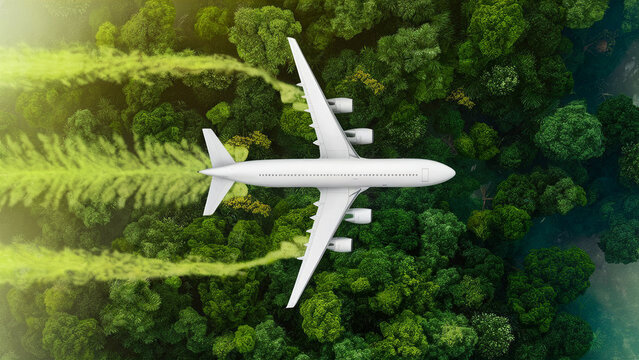In recent years, green tourism has shifted from niche preference to mainstream priority as travelers increasingly seek to minimize the environmental impact of their journeys. Among the most visible manifestations of this trend is the growing demand for carbon-neutral flights—air travel options that combine emission reductions with high-integrity offsets and sustainable aviation fuel (SAF). This article explores the forces driving this shift, the innovations enabling carbon-neutral air travel, and the implications for both travelers and airlines.
Evolving Traveler Values
Modern travelers are more climate-conscious than ever. A 2025 survey by a leading sustainable travel organization found that over 60% of passengers consider an airline’s environmental commitments when booking flights. Sustainability has become a key decision factor, alongside price and schedule. For many, the choice to fly carbon-neutral reflects a desire for meaningful impact and aligns with broader values around ethical consumption and environmental stewardship.
The Components of Carbon-Neutral Flights
Achieving carbon neutrality in aviation rests on three core strategies:
- Operational Efficiency Improvements
Airlines optimize routes, implement continuous descent approaches, and employ data analytics platforms to reduce fuel burn. IATA’s Fuel Efficiency Gap Analysis has demonstrated average fuel savings of 4.4% per airline through such measures. - Sustainable Aviation Fuel (SAF) Adoption
SAF reduces lifecycle CO₂ emissions by up to 80% compared to conventional jet fuel. Book-and-claim systems and direct SAF blends at participating airports are making low-carbon air travel increasingly accessible. - High-Integrity Carbon Offsets
Remaining emissions are neutralized through investment in certified offset projects—ranging from reforestation and renewable energy to clean cookstove initiatives. Offsets certified by Gold Standard or Verified Carbon Standard ensure additionality and permanence, addressing concerns around project quality.
Together, these elements allow airlines to offer carbon-neutral ticket options, providing travelers with a transparent and verifiable way to balance the emissions from their flights.
Airline Commitments and Passenger Incentives
Numerous carriers now feature carbon-neutral flight options directly in their booking engines. Major airlines that have integrated these offerings include:
- Qantas, which lets flyers add a SAF blend at purchase and earn bonus loyalty points for offset contributions.
- United Airlines, offering an “Eco-Skies CarbonChoice” add-on to fund community-based forestry and clean-cookstove projects.
- Lufthansa–myclimate, enabling passengers to offset emissions through renewable energy and forest conservation projects vetted by Gold Standard.
By embedding carbon-neutral choices into frequent-flyer programs and reward structures, airlines align environmental responsibility with customer loyalty.
Technology and Transparency
Transparency is essential for building trust in carbon-neutral claims. Digital platforms now allow passengers to:
- Compare emissions between flight options based on aircraft type, distance, and seating configuration.
- Trace SAF sourcing, with airlines reporting the percentage of SAF in their fuel pools and the feedstock origins.
- View offset project details, including location, certification standard, and measurable impact metrics.
These tools empower travelers to make informed choices and reinforce accountability within the aviation industry.
Challenges and Opportunities
Scaling SAF Production
Despite its promise, SAF currently accounts for less than 1% of global jet fuel consumption. Expanding production requires substantial investment in feedstock processing infrastructure and supportive policy measures, such as blending mandates and tax incentives.
Ensuring Offset Quality
The integrity of carbon offsets hinges on rigorous verification. Airlines and offset providers must continually prioritize projects with strong additionality, permanence safeguards, and social co-benefits to avoid criticisms of greenwashing.
Balancing Cost and Accessibility
Carbon-neutral tickets often carry a premium of US $5–20 per passenger, reflecting the higher cost of SAF and offset procurement. Widespread adoption depends on balancing these costs through economies of scale, government subsidies, and innovative financing models.
The Road Ahead for Green Tourism
As green tourism continues its ascent, carbon-neutral flights are likely to become a standard offering rather than a premium add-on. Key trends to watch include:
- Broader SAF distribution networks, with SAF availability at more airports through book-and-claim and direct blending initiatives.
- Electric and hydrogen aircraft prototypes entering commercial service for short-haul routes by the mid-2030s, further reducing lifecycle emissions.
- Integrated travel platforms bundling carbon-neutral air travel with sustainable ground transport, eco-certified accommodations, and regenerative tourism experiences.
For travelers, the rise of carbon-neutral flights offers an actionable way to align wanderlust with environmental responsibility. By choosing airlines committed to decarbonization, leveraging transparent digital tools, and supporting high-quality offsets, passengers can help steer aviation toward a more sustainable future—one flight at a time.

